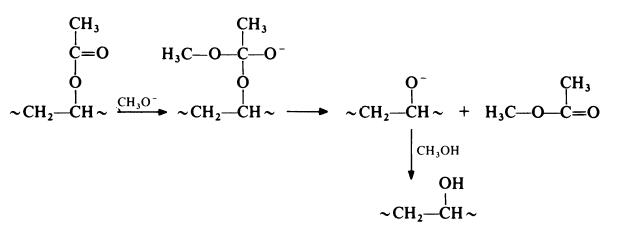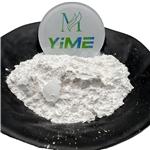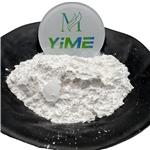Poly(vinyl alcohol)
- CAS No.
- 9002-89-5
- Chemical Name:
- Poly(vinyl alcohol)
- Synonyms
- PVA;PVA-124;Gohsenol;poly(vinyl alcohol) macromolecule;Polyvinyl alcohol, 86-89% hydrolyzed, medium molecular weight;Poval;PVA-103;POLYVINYL ALCOHOL 2000;POLYVINYL ALCOHOL (PVA);PVA-224
- CBNumber:
- CB7264573
- Molecular Formula:
- C2H4O
- Molecular Weight:
- 44.05256
- MDL Number:
- MFCD00677796
- MOL File:
- 9002-89-5.mol
- MSDS File:
- SDS
| Melting point | >300 °C |
|---|---|
| Boiling point | -14.5°C (rough estimate) |
| Density | 1.080 g/cm3 |
| refractive index | 1.3810 (estimate) |
| Flash point | 79°C |
| storage temp. | Store below +30°C. |
| solubility | H2O: soluble (hot) |
| form | Powder |
| color | White to cream |
| Odor | at 100.00?%. odorless |
| PH | 3.5-7.0 (40g/l, H2O, 20℃) |
| Water Solubility | soluble in hot water |
| Merck | 14,7585 |
| Dielectric constant | 1.9(Ambient) |
| Stability | Stable. Combustible. Dust may form explosive mixtures with air. Incompatible with strong oxidizing agents. |
| FDA 21 CFR | 177.1670; 175.300; 176.180; 177.2800; 178.3910; 73.1 |
| Substances Added to Food (formerly EAFUS) | POLYVINYL ALCOHOL |
| FDA UNII |
POLYVINYL ALCOHOL/POLYVINYL ACETATE COPOLYMER (4:1; 9500 MW) (2AVG41YG39) POLYVINYL ALCOHOL (170000 MW) (1E30GE2EF7) POLYVINYL ALCOHOL, UNSPECIFIED (532B59J990) POLYVINYL ALCOHOL (130000 MW) (660SZ0AKDA) POLYVINYL ALCOHOL/POLYVINYL ACETATE COPOLYMER (8:1; 50000 MW) (8K8B5SD7ZR) |
| NIST Chemistry Reference | Polyvinyl alcohol(9002-89-5) |
| IARC | 3 (Vol. 19, Sup 7) 1987 |
| EPA Substance Registry System | Polyvinyl alcohol (9002-89-5) |
SAFETY
Risk and Safety Statements
| Symbol(GHS) |  GHS08 |
|||||||||
|---|---|---|---|---|---|---|---|---|---|---|
| Signal word | Warning | |||||||||
| Hazard statements | H371 | |||||||||
| Precautionary statements | P260 | |||||||||
| Hazard Codes | Xn | |||||||||
| Risk Statements | 23/24/25-36/38-39/23/24/25-68/20/21/22-20/21/22 | |||||||||
| Safety Statements | 26-36/37-45-24/25 | |||||||||
| WGK Germany | 1 | |||||||||
| RTECS | TR8100000 | |||||||||
| Autoignition Temperature | 450 °C | |||||||||
| TSCA | Yes | |||||||||
| HS Code | 39053000 | |||||||||
| Toxicity | LD50 orally in Rabbit: > 20000 mg/kg | |||||||||
| NFPA 704 |
|
Poly(vinyl alcohol) price More Price(120)
| Manufacturer | Product number | Product description | CAS number | Packaging | Price | Updated | Buy |
|---|---|---|---|---|---|---|---|
| Sigma-Aldrich | 8.43866 | Polyvinyl alcohol, fully hydrolized (Mw approx. 60000) for synthesis | 9002-89-5 | 100g | $36.4 | 2024-03-01 | Buy |
| Sigma-Aldrich | 8.43866 | Polyvinyl alcohol, fully hydrolized (Mw approx. 60000) for synthesis | 9002-89-5 | 1kg | $113 | 2024-03-01 | Buy |
| Sigma-Aldrich | 8.43866 | Polyvinyl alcohol, fully hydrolized (Mw approx. 60000) for synthesis | 9002-89-5 | 25kg | $1240 | 2024-03-01 | Buy |
| Sigma-Aldrich | 8.21039 | Polyvinyl alcohol, fully hydrolyzed (Mw approx. 30000) for synthesis | 9002-89-5 | 100g | $38.6 | 2024-03-01 | Buy |
| Sigma-Aldrich | 8.21039 | Polyvinyl alcohol, fully hydrolyzed (Mw approx. 30000) for synthesis | 9002-89-5 | 1kg | $129 | 2024-03-01 | Buy |
Poly(vinyl alcohol) Chemical Properties,Uses,Production
Air & Water Reactions
Water soluble.
Fire Hazard
This chemical is combustible. The dusts of this chemical are a slight explosion hazard when exposed to flame. (NTP, 1992)
Health Hazard
SYMPTOMS: Inhalation of the dust of this chemical may cause irritation of the nose and throat and cause coughing and chest discomfort if heated above 390° F. The dusts may also irritate the eyes. Implantation of this chemical into the breast has been associated with fibrosis. ACUTE/CHRONIC HAZARDS: This compound may be harmful by ingestion and inhalation. It may cause irritation. When heated to decomposition it emits acrid smoke, irritating fumes and toxic fumes of carbon monoxide and carbon dioxide. (NTP, 1992)
Reactivity Profile
Mixtures of alcohols with concentrated sulfuric acid and strong hydrogen peroxide can cause explosions. Example: an explosion will occur if dimethylbenzylcarbinol is added to 90% hydrogen peroxide then acidified with concentrated sulfuric acid. Mixtures of ethyl alcohol with concentrated hydrogen peroxide form powerful explosives. Mixtures of hydrogen peroxide and 1-phenyl-2-methyl propyl alcohol tend to explode if acidified with 70% sulfuric acid [Chem. Eng. News 45(43):73. 1967; J, Org. Chem. 28:1893. 1963]. Alkyl hypochlorites are violently explosive. They are readily obtained by reacting hypochlorous acid and alcohols either in aqueous solution or mixed aqueous- carbon tetrachloride solutions. Chlorine plus alcohols would similarly yield alkyl hypochlorites. They decompose in the cold and explode on exposure to sunlight or heat. Tertiary hypochlorites are less unstable than secondary or primary hypochlorites [NFPA 491 M 1991]. Base-catalysed reactions of isocyanates with alcohols should be carried out in inert solvents. Such reactions in the absence of solvents often occur with explosive violence [Wischmeyer 1969].
Chemical properties
Polyvinyl alcohol(9002-89-5) is a hydrolysis product of polyvinyl acetate, rather than by the polymerization of monomers; the molecular backbone contains  . The specific gravity of this product 1.25 to 1.35 and the melting point is 212 ~ 267 ℃. It is soluble in hot water and hot dimethyl sulfoxide. Animal experiments show that polyvinyl alcohol, without stimulation, causes no significant toxicity upon subcutaneous, intramuscular, intravenous injection. Polyvinyl alcohol resin products appear as white solid with the appearance of sub-floc, granular and powder; it is non-toxic, tasteless, non-polluting and is soluble in water of 80--90 ℃. Its aqueous solution has good adhesiveness and film-forming property; it can resist most organic solvents such as oils, lubricants and hydrocarbons; it has long-chain polyol esterification, etherification, acetalization and other chemical properties.
. The specific gravity of this product 1.25 to 1.35 and the melting point is 212 ~ 267 ℃. It is soluble in hot water and hot dimethyl sulfoxide. Animal experiments show that polyvinyl alcohol, without stimulation, causes no significant toxicity upon subcutaneous, intramuscular, intravenous injection. Polyvinyl alcohol resin products appear as white solid with the appearance of sub-floc, granular and powder; it is non-toxic, tasteless, non-polluting and is soluble in water of 80--90 ℃. Its aqueous solution has good adhesiveness and film-forming property; it can resist most organic solvents such as oils, lubricants and hydrocarbons; it has long-chain polyol esterification, etherification, acetalization and other chemical properties.
Uses
It is mainly used in the textile industry, as the raw materials of warp pulp, fabric finishing agent, vinylon fiber; interior and exterior wall paint of the building, adhesives; chemical industry use it as a polymerization emulsifier, dispersant and polyvinyl formal, acetal, butyrate aldehyde resin; paper industry use it as a paper binder; agriculture use it as soil improvers, pesticide adhesion synergist and polyvinyl alcohol film; it can also be used for daily cosmetics and high-frequency quenching agent and so on.
Chemical Properties
Polyvinyl alcohol occurs as an odorless, white to cream-colored granular powder.
Uses
NaA zeolite particles have been dispersed in a poly(vinyl alcohol) matrix to prepare a mixed-matrix membrane to study the pervaporative separation of water-butanol mixtures. Poly (vinyl alcohol)/gelatin based biocompatible polymeric scaffolds have been used to design for 3D cancer models.
Uses
Mowiol? 40-88 can be used for a variety of applications such as drug delivery, surface enhanced Raman spectroscopy (SERS) fiber-optic sensors, and transparent conducting oxides (TCOs).
Uses
In the plastics industry in molding Compounds, surface coatings, films resistant to gasoline, textile sizes and finishing compositions; can be compounded to yield elastomers to be used in manufacture of artificial sponges, fuel hoses, etc., also in printing inks for plastics and glass, in pharmaceutical finishing, cosmetics, water-sol film and sheeting. Pharmaceutic aid (viscosity increasing agent); ophthalmic lubricant.
Production Methods
Polyvinyl alcohol is produced through the hydrolysis of polyvinyl acetate. The repeating unit of vinyl alcohol is not used as the starting material because it cannot be obtained in the quantities and purity required for polymerization purposes. The hydrolysis proceeds rapidly in methanol, ethanol, or a mixture of alcohol and methyl acetate, using alkalis or mineral acids as catalysts.
Definition
ChEBI: Polyvinyl alcohol is a homopolymer macromolecule obtained by polymerisation of vinyl alcohol. It is used as a pharmaceutic aid and ophthalmic lubricant as well as in the manufacture of surface coatings artificial sponges, cosmetics, and other products.
Preparation
Vinyl alcohol has not been isolated in the free state; the keto tautomer,
acetaldehyde, is much the more stable form and is always obtained:

Thus poly(vinyl alcohol) cannot be prepared from its monomer by the usual techniques, although the polymerization of acetaldehyde with sodium amalgam at - 80 to - 20?? has been found to give poly( vinyl alcohol) of low molecular weight. For commercial purposes, poly(vinyl alcohol) is obtained exclusively from poly(vinyl acetate).
Poly(vinyl acetate) is readily hydrolysed by treating an alcoholic solution with aqueous acid or alkali. Acid hydrolysis results in traces of acid in the poly(vinyl alcohol) which are difficult to remove and which lead to instability of the polymer; alkaline hydrolysis results in contamination of the product by a large amount of sodium acetate which is also difficult to remove and which has little intrinsic value. These difficulties are avoided if poly(vinyl alcohol) is prepared from poly(vinyl acetate) by alcoholysis using a small amount of base as catalyst. The reaction is commonly carried out by treating poly(vinyl acetate) with methanol in the presence of sodium methoxide:

The preferred methods of preparing poly(vinyl acetate) for conversion to poly(vinyl alcohol) are solution and suspension polymerization. The former technique has the advantage that if polymerization is conducted in methanol the resulting solution can be used directly without the need for isolating the polymer; this method is the most suitable for continuous processes. Bulk polymerized poly(vinyl acetate) tends to give low molecular weight poly(vinyl alcohol) of poor colour.
In one continuous process, a solution of poly(vinyl acetate) in methanol (about 20%) is mixed with the catalyst solution in a high speed in-line mixer. The mixture then passes through a 'gelling zone' on a conveyor belt. Typically, the material is kept at 40?? for 10 minutes in this zone during which time the alcoholysis reaction occurs; poly(vinyl alcohol) is insoluble in methanol and a gel is produced. The gel is chopped up and neutralized with acetic acid to stop reaction; the liquid content (whica is mainly methanol and methyl acetate) is then expressed and recovered. The residual solid is washed with methanol, dried and pulverized.
It is possible to control the extent to which acetate groups are replaced by hydroxyl groups by changing the reaction conditions. In particular, the catalyst concentration and the time of reaction have a major effect on the degree of alcoholysis. The most common commercial types of poly(vinyl alcohol) are the so-called partially hydrolysed grades in which 87-89% of the acetate groups have been replaced and the completely hydrolysed grades in which 99-100% of the acetate groups have been replaced. The degree of alcoholysis has an effect on the properties of the polymer.
brand name
Liquifilm Tears (Allergan).
General Description
Polyvinyl alcohol (PVOH) is a hydrophilic linear polymer which forms copolymers of vinyl alcohol and vinyl acetate. Hence, the structural properties of polyvinyl alcohol polymers depend on the extent of polymerization and hydrolysis. Such changes cause both chemical and physical modifications such as esterification, etherification, crystallization, ion-polymer complexation in the polymer. Modified- PVOH structures are useful in biomedical applications.
Pharmaceutical Applications
Polyvinyl alcohol is used primarily in topical pharmaceutical and ophthalmic formulations. It is used as a stabilizing agent for emulsions (0.25–3.0% w/v). Polyvinyl alcohol is also used as a viscosity-increasing agent for viscous formulations such as ophthalmic products. It is used in artificial tears and contact lens solutions for lubrication purposes, in sustained-release formulations for oral administration, and in transdermal patches. Polyvinyl alcohol may be made into microspheres when mixed with a glutaraldehyde solution.
Industrial uses
Polyvinyl alcohol is a tough, whitish polymerthat can be formed into strong films, tubes, andfibers that are highly resistant to hydrocarbonsolvents. Although polyvinyl alcohol is one ofthe few water-soluble polymers, it can be renderedinsoluble in water by drawing or by theuse of cross-linking agents.
Biochem/physiol Actions
Poly(vinyl alcohol) (PVA) is a polyhydroxy polymer, soluble in water. PVA is known to possess high mechanical strength, biocompatibility and non-toxicity. Hence, it serves as a biomedical implant material. Polymerization of vinyl acetate to poly (vinyl acetate), which is then hydrolysed to form PVA. Its application is observed in drug delivery systems, wound dressing, dialysis membranes, artificial skin, surgical repairs and cardiovascular devices.
Safety Profile
Questionable carcinogen with experimental carcinogenic and tumorigenic data by implant route. Flammable when exposed to heat or flame; can react with oxidizing materials. Slight explosion hazard in the form of dust when exposed to flame. To fight fire, use alcohol foam, CO2, dry chemical. When heated to decomposition it emits acrid smoke and irritating fumes.
Safety
Polyvinyl alcohol is generally considered a nontoxic material. It is
nonirritant to the skin and eyes at concentrations up to 10%;
concentrations up to 7% are used in cosmetics.
Studies in rats have shown that polyvinyl alcohol 5% w/v
aqueous solution injected subcutaneously can cause anemia and
infiltrate various organs and tissues.
(mouse, oral): 14.7 g/kg
(rat, oral): >20 g/kg
storage
Polyvinyl alcohol is stable when stored in a tightly sealed container in a cool, dry place. Aqueous solutions are stable in corrosionresistant sealed containers. Preservatives may be added to the solution if extended storage is required. Polyvinyl alcohol undergoes slow degradation at 100°C and rapid degradation at 200°C; it is stable on exposure to light.
Incompatibilities
Polyvinyl alcohol undergoes reactions typical of a compound with secondary hydroxy groups, such as esterification. It decomposes in strong acids, and softens or dissolves in weak acids and alkalis. It is incompatible at high concentration with inorganic salts, especially sulfates and phosphates; precipitation of polyvinyl alcohol 5% w/v can be caused by phosphates. Gelling of polyvinyl alcohol solution may occur if borax is present.
Regulatory Status
Included in the FDA Inactive Ingredients Database (ophthalmic preparations and oral tablets). Included in nonparenteral medicines licensed in the UK. Included in the Canadian List of Acceptable Non-medicinal Ingredients.
Poly(vinyl alcohol) Preparation Products And Raw materials
Raw materials
1of2
Preparation Products
1of6
| Supplier | Tel | Country | ProdList | Advantage | |
|---|---|---|---|---|---|
| Shandong Zhishang New Material Co., Ltd. | +8617653113209 | sales002@sdzschem.com | China | 3050 | 58 |
| Hebei Duling International Trade Co. LTD | +8618032673083 | sales05@hbduling.cn | China | 15747 | 58 |
| Hebei Nafu Technology Co. , Ltd. | +8615075022224 | 17745771666@hebeinafu.com | China | 325 | 58 |
| Hebei Dangtong Import and export Co LTD | +8615632927689 | admin@hbdangtong.com | China | 991 | 58 |
| Yujiang Chemical (Shandong) Co.,Ltd. | +86-17736087130 +86-18633844644 | catherine@yjchem.com.cn | China | 89 | 58 |
| Firsky International Trade (Wuhan) Co., Ltd | +8615387054039 | admin@firsky-cn.com | China | 436 | 58 |
| Henan Bao Enluo International TradeCo.,LTD | +86-17331933971 +86-17331933971 | deasea125996@gmail.com | China | 2503 | 58 |
| Hebei Jingbo New Material Technology Co., Ltd | +8619931165850 | hbjbtech@163.com | China | 1000 | 58 |
| Henan Fengda Chemical Co., Ltd | +86-371-86557731 +86-13613820652 | info@fdachem.com | China | 7377 | 58 |
| Shandong Juchuang Chemical Co., LTD | +86-18885615001 +86-18885615001 | admin@juchuangchem.com | China | 387 | 58 |
Related articles
- Polyvinyl alcohol: Properties, Production process and Uses
- PVA is used in the manufacture of construction glue, polyvinyl acetal, vinylon, fabric treatment agent, dispersant, paper coat....
- Mar 21,2024
- Various applications and degradation properties of polyvinyl alcohol
- Polyvinyl alcohol (PVA) is a linear synthetic polymer produced via partial or full hydrolysis of polyvinyl acetate to remove t....
- Aug 1,2022
View Lastest Price from Poly(vinyl alcohol) manufacturers
| Image | Update time | Product | Price | Min. Order | Purity | Supply Ability | Manufacturer | |
|---|---|---|---|---|---|---|---|---|
 |
2024-04-19 | Polyvinyl Alcohol
9002-89-5
|
US $5.00-3.00 / kg | 1000kg | 99% | 5000kg/week | Hebei Yime New Material Technology Co., Ltd. | |
 |
2024-04-19 | Polyvinyl Alcohol
9002-89-5
|
US $5.00-3.00 / kg | 1000kg | 99% | 5000kg/week | Hebei Yime New Material Technology Co., Ltd. | |
 |
2024-04-19 | Polyvinyl Alcohol
9002-89-5
|
US $5.00-3.00 / kg | 1000kg | 99% | 5000kg/week | Hebei Yime New Material Technology Co., Ltd. |
-

- Polyvinyl Alcohol
9002-89-5
- US $5.00-3.00 / kg
- 99%
- Hebei Yime New Material Technology Co., Ltd.
-

- Polyvinyl Alcohol
9002-89-5
- US $5.00-3.00 / kg
- 99%
- Hebei Yime New Material Technology Co., Ltd.
-

- Polyvinyl Alcohol
9002-89-5
- US $5.00-3.00 / kg
- 99%
- Hebei Yime New Material Technology Co., Ltd.
9002-89-5(Poly(vinyl alcohol))Related Search:
1of4





